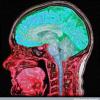The information you posted is very interesting. I'm still reading it over and trying to take it all in. I'll see what observations I can make about this and report back.
So far, from what I can gather from the studies that you've posted for the BPAP, this particular compound doesn't work primarily through an agonist or inhibitory action; this may mean no desensitizing or downregulation of catecholamine producing receptors.
For comparison of Deprenyl vs. BPAP:
Deprenyl (CAE mechanism dominant at lower than normal dosages-->MAOB at normal dosages-->MAOA+tons of side effects at above normal dosages):
The Deprenyl's primary mode of action seems to very well be the fact that it's primarily a CAE. However, this mode of action (that wasn't really proven until the 1990's) is just covered up by it's MAOB inhibiting properties at regular level dosages.
BPAP (Primarily just CAE mode of action as opposed to enzyme inhibition):
Now, the BPAP on the otherhand, seems to work primarily as a CAE without the enzyme (MAOB) inhibiting actions? This would be great if this is the case since this would mean resensitizing receptors and enhancement of catecholamine receptors (deprenyl's CAE mode of action does this but the MAOB inhibition mechanism that goes on at regular level dosages seems to do the opposite of it's CAE enhancement properties and actually causes desensitization or downregulation that may occur as long as MAOB inhibition is going on???).
Furthermore, the BPAP (since it's derived from Tyramine), seems to have a big CAE effect on Serotonin unlike Deprenyl (which only has a CAE effect on catecholamines at very low dosages-->at higher dosages it's mainly MAOB inhibition that takes over on these catecholamines). This CAE effect isn't through an inhibitory effect either. The serotonin effects would could possibly feel somewhat like an "entactogen" in some way minus the danger level.
Overall:
The mechanisms by which the BPAP drug works are very, very interesting. This could present a new route towards effecting your basic monamine type nuerotransmitters than ever before. The CAE effect is obviously the main interesting part. However, what I find also interesting is the fact that this enahnces the catecholamines (dopamine, norepinephirine, epinephirine) but doesn't trade this off in terms of enhancing serotonin.
Here's a wild theory on my part. Please correct me if I'm wrong:
Maybe the Deprenyl's effects are more euphoric towards those who aren't getting their serotonin level pushed down further than it already is, which could've happened to me right after I took deprenyl. Maybe this is just one of the many possibilities for why someone may not feel more sociable, expereince greater sex druve, feel flat (this seems common for everybody regardless just to different extents) while trying deprenyl? This leads right into why BPAP sounds interesting to me.
actually tried doing that same combination listed above 6 months ago for 1 month, and then switched to 8g piracetam, 2g aniracetam, 2g oxiracetam, 500mg alpha gpc, 500mg cdp choline for a month and still didn't get this effect combined with selegiline.
Maybe a stronger racetam like noopept or nefiracetam could enhance the effect more than piracetam.
And then maybe the CAE is the key instead of MAO-B, in which BPAP would be more effective
Those bluelight reports that you posted were very interesting. They didn't simply touch on the main effects that "most" people are "supposed" to experience.
The memory aspect behind deprenyl is particularly fascinating.
Here's an interpretation (of the bluelighter accounts) I'm just pulling together on the spot (if it doesn't make sense just ignore it):
One aspect that I'm not too surprised by is that people say they remember stuff better but don't necessarily feel like they do. This type of effect could be similar with amphetamines. I'm guessing that greatly enhanced dopaminergic pathways increase some forms of memory such as that attached directly to executive function/analytical skills. Amphetamines tend to increase ones ability to zone in on one thing while maybe reducing distractions (reduced bloodflow to the cerebellum and other structures). While zoned into something, it may be harder to percieve (spatial awareness) what's around you and multi-task (plasticity seems to be lower from amphetamines). If taking Selegiline at tolerable doesages (since Selegiline obviously doesn't have the same effect as amphetamines), this tradeoff may be minimized.
However, a bit of the flatness and zoned in feeling could account for possible spatial deficits if taken in too high of a dosage and could account for some of the bluelighters feeling they were remembering stuff better without but not necessarily feeling more clearheaded.
However, I still think that, Blazewind, you were right by saying that Selegeline could be used as part of a combo for the "holy grail" of memory enhancement. However, as you made note of at the end of your post, I'm thinking the CAE sounds like the real key (to use as a combo with other supplements) rather than that of the MAOB mechanism. While the MAOB mechanism is why most people take Deprenyl (and experience benefit), I think there is still tradeoff here (mentioned in the posts in this thread) unless someone were producing too much MAOB enzyme, wanted to protect against some sort of toxin (like MPTP), or possible other usages. For the ultimate combo, it seems that CAE may be more important than inhibition and would provide a new mechanism to play with in regards to altering monamine levels. The BPAP or other possible research compounds seem to work primarily in this regard.
Edited by yowza, 28 April 2009 - 11:54 PM.





















































